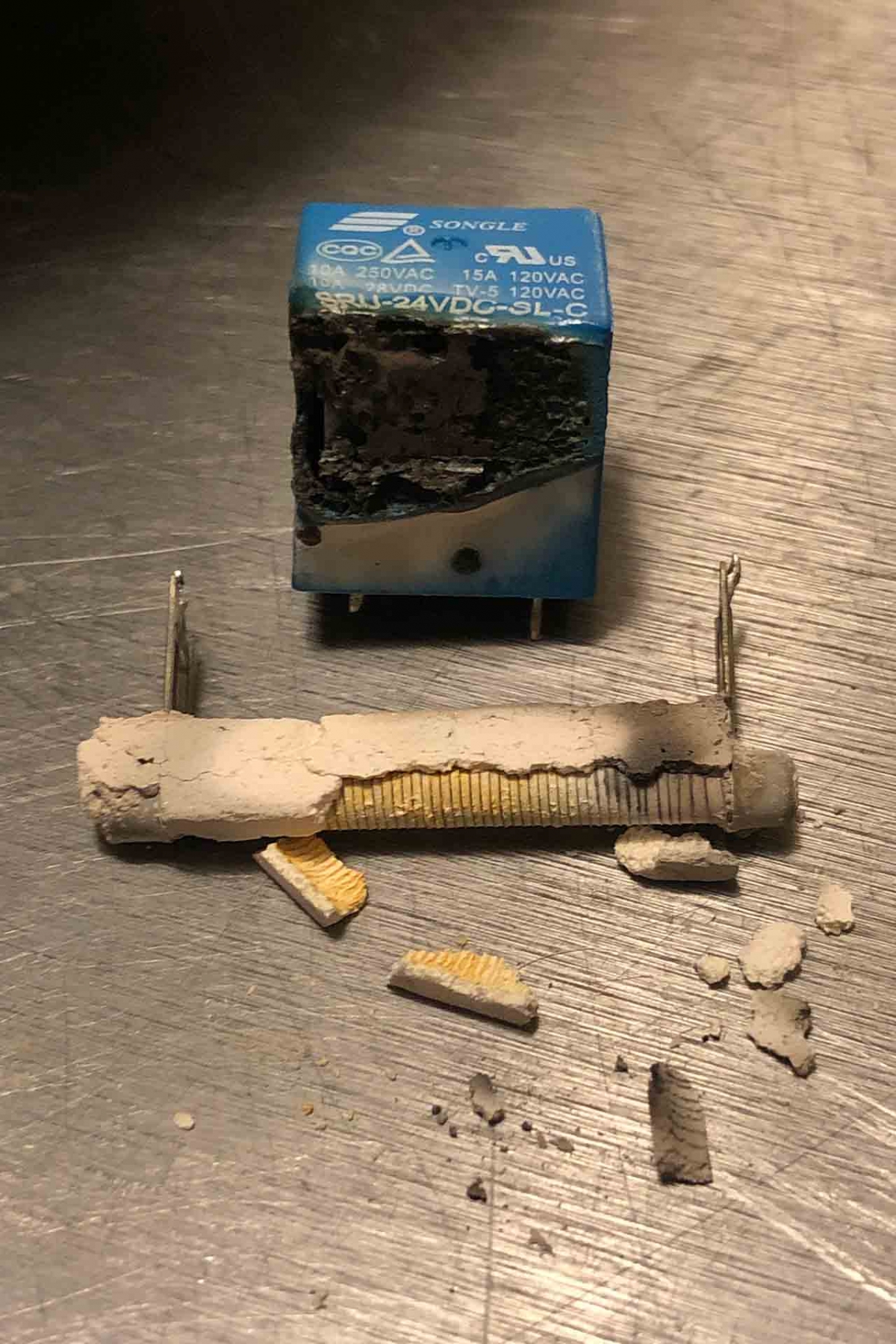
Smoking Carvin RX800 Powered Mixer
Somewhere around a decade ago, the Bottom Dwellers’ PA head took a flaming shit. It started smoking. It was out of warranty, and rather than deal with repairs and not having a PA for a while, we replaced it with a Mackie PPM1008. Ever since then, the Carvin PA has functioned as my amp stand.
I recently took on a few repair projects for solid state/PCB-based amps, and thought I might as well take a crack at getting this one up and running. Powered mixers are quite a bit more complex than simple guitar and bass amps, but I though since it was smoking, the parts would be easy to spot and swap out. Turns out, no. Not really.
If you aren’t familiar with them, the Carvin RX series of powered mixers featured 4 separate power amplifiers. This gives you the ability to run two monitor mixes and stereo mains—extremely rare in the powered mixer world, and why we purchased this mixer. It also came standard inside an Anvil road case. Very rugged, and very compact.
Opening the chassis was a breeze. Finding the problem wasn’t. The layout spans across five circuit boards that are cleverly organized. One attached to the faceplate where all of the knobs are, one for the main power supply, one for the amplifier, effects and tone circuit, one for the inputs, and one for the AC plug, power switch, and line-level outputs for the amplifiers. Most of the components are surface-mount, which wasn’t encouraging.
I figured the issue would be with the power supply, but didn’t find any sign of burning on any of the components or circuit boards. The two circuit boards attached to the back of the chassis were only visible from the back side (figure 1). I wasn’t sure I could remove them without first removing the amplifier board, so I did, and regretted it. It wasn’t too difficult, but each power transistor connected directly to the heatsink with its own screw. There was also some kind of white conductive thermal paste on all the transistors behind the board that got everywhere. As it turns out, I could have removed the output board without removing the amplifier board.
No sign of burning from the output board. I removed the board with the power switch, and there it was: a relay had melted itself onto a 10w 100Ω resistor (figure 2).
I popped them off and scoured the internet for replacement parts. Antique Electronic Supply is my go-to for most things. The Songle relay was a little difficult to source (I apprehensively ordered from an eBay user that call themselves n-o-f-a-k-e). There wasn’t one specced exactly the same. The burned up one was rated for 250VAC and 28VDC. The only ones I could find were rated for 30VDC. I doubt if 2 volts of DC would make any difference, so I had them pack up a few on the slow boat from China for me.
To my surprise, the slow boat from China floats much faster now. Despite the 30-day estimated ship date, my parts were all in hand in less than two weeks!
Because I mostly work on vintage amps, this was my first time working with lead-free solder. It just doesn’t melt very easily. I typically have my iron set to 750℉, which is a pretty high for circuit board components. I found everything was easier to desolder if I added some normal 60/40 solder to the joint, and let it melt into the lead-free stuff first, then desolder the components.
Other than that, the components were easy to replace, and the layout of this PA is super easy to work on. One thing I do like about circuit boards like this is that with all the components labeled, it’s easy to cross-reference with the schematic.
What I do not like is when you swap out the visibly bad components for new ones, then fire up the amp, only to have it start smoking again. Yes, this is what happened (thankfully there are four more relays in the package I purchased). The problem seems to be earlier in the circuit, which is not a good prognosis given that there isn’t much more before this part of the circuit other than the power transformer.
I’m not sure how deep into this repair I want to go. I really don’t like surface-mount components, and the resale on these powered mixers is pretty low to justify digging up expensive replacement parts like power transformers. Still, I hate having broken stuff taking up space in my garage. If I do take another stab at it, and end up fixing it, I’ll likely donate it to a local school or something.